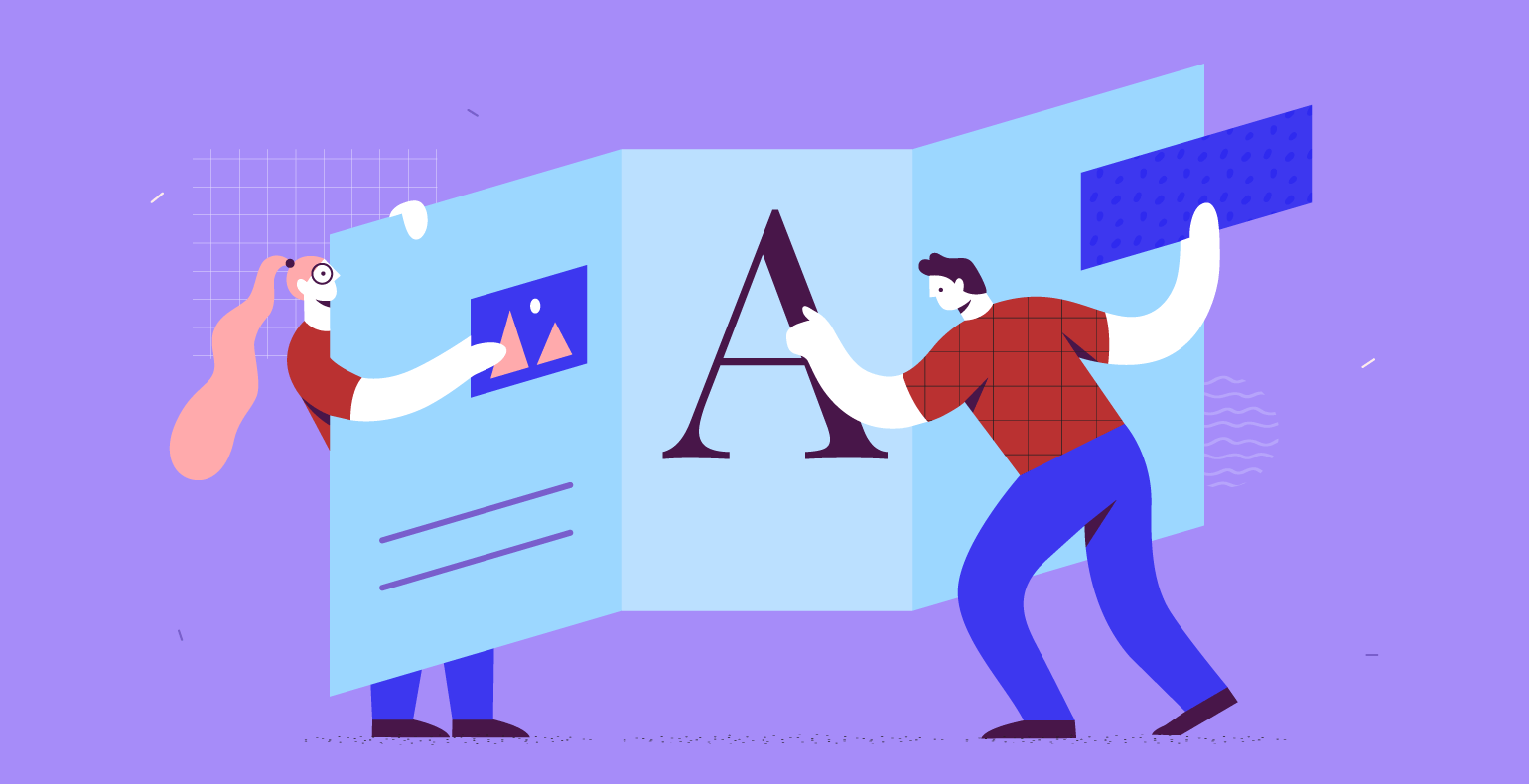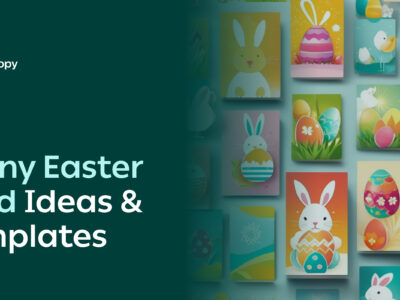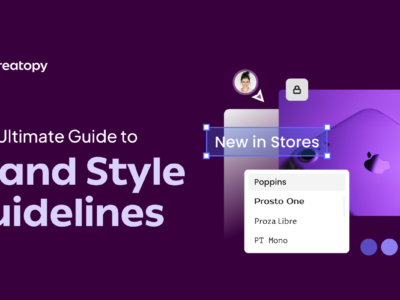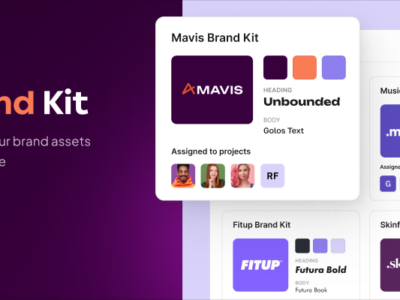We’ve all seen our fair share of brochures, whether they were handed to us on the street, received in the mail, folded in our Sunday newspaper, or placed in our packaged order.
You might be thinking, “Why would anyone invest in a business brochure in the digital age?”
That’s because brochures offer several advantages when compared to online marketing options.
They give you the ability to better target your audience, offer more space for you to deliver information about your product or company than social media or PPC ads, and can be more cost-effective.
In this guide, I’ll show you how to create your company brochure step by step, from planning for your needs to writing the copy, designing the brochure, and, finally, printing it.
A. 5 questions to answer before you start
E. Using Creatopy to design the brochure
A. Before You Start
Answer these five questions before you start working on the actual brochure design to know what you’ll need from the get-go.
1. Who is your target audience?
Make sure you adapt your brochure design and copy based on the audience you’re trying to reach. Some people respond better to text, while others prefer images. Likewise, some expect a more formal, corporate tone, while others prefer a friendly and conversational tone.
Also, figure out what information they’re looking for. Ask yourself what your target audience is dealing with and how your company can solve those issues.
If you know who you’re designing your brochure for, you will be able to pick the elements that are guaranteed to grab their attention and keep them reading throughout.
2. Where do you plan to distribute your brochure?
This aspect is greatly influenced by your target audience’s habits and interests. For example, you shouldn’t distribute your brochures as newspaper inserts unless your target audience consists of avid newspaper readers.
In turn, the means of distribution will influence the type of brochure you’re going to choose. If you plan on printing a large number of brochures to be handed out on the street, you might want to go with a simple flyer printed on plain paper to minimize costs.
However, if you’re handing out business brochures at a conference where people are likely to receive several others from your competitors, it’s smart to invest in a high-quality paper.
3. What are you trying to accomplish?
What is the goal of your brochure? Are you trying to get more people to visit your store? Do you want them to sign up for your newsletter or visit your website?
Make sure your message is clear, and, to get the results you want, transcribe your goal into a strong, easy-to-spot CTA.
4. How much are you willing to spend?
Settle on the amount of money you’re willing to spend on your brochure campaign early on.
Granted, this budget can be adjusted, but at one point, you might have to choose between higher quality paper and printing more copies or between hiring a designer or a copywriter and doing the job yourself.
Knowing where you stand with the budget will help you focus on your priorities and figure out where you’re willing to compromise.
5. How are you going to measure ROI?
After you distribute your brochures, how will you know that you have achieved your goal?
Adding a discount code or a coupon to your brochure can help you track your store’s orders or visits. For online tracking, you can create a custom landing page and include a unique link or a QR code in your brochure. Learn how to generate QR code for the custom landing page.
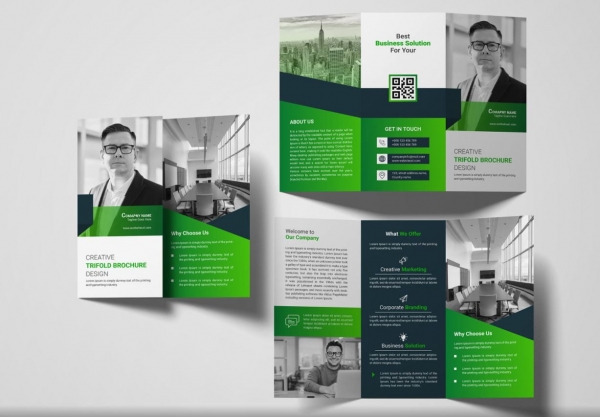
Brochure design by Md Hasan
If you want customers to call you, list a phone number in your brochure and ask callers, “How did you hear about us?”
B. Choosing Your Brochure Type
After you’ve settled on your target audience, goal, and budget, you can start thinking about which brochure type best fits your campaign. There are many brochure types out there that you can choose from depending on your needs.
You have several options when it comes to brochure folds. Here are some of the most popular ones: half fold, tri fold, z fold, parallel fold. single open gate fold, double gate fold, roll fold, accordion fold, half then half fold, and half then tri fold.
The business Tri-Fold brochure is probably the most recognizable and used type of brochure. However, if you need your panels to be more connected and visible next to each other, you can go with the Half-Fold, the Z-Fold, or the Accordion Fold, depending on your brochure’s size and how you want to structure the information.
For a more complex subject, such as a business report or a company profile brochure, you can go with a booklet.
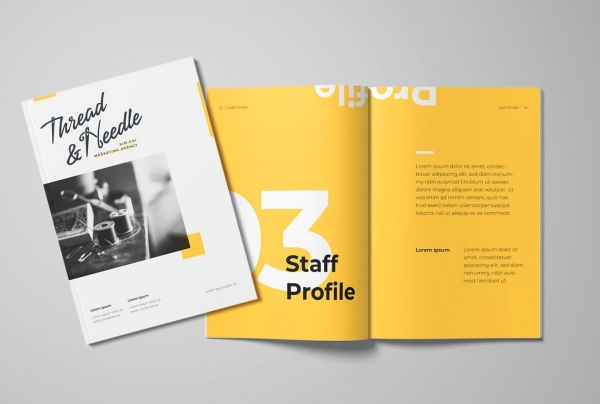
Booklet design by Phuong Thaoo
However, if you want to promote a one-time event or offer, you’re probably looking for a cheaper option that is easier to distribute, such as a flyer or a leaflet.
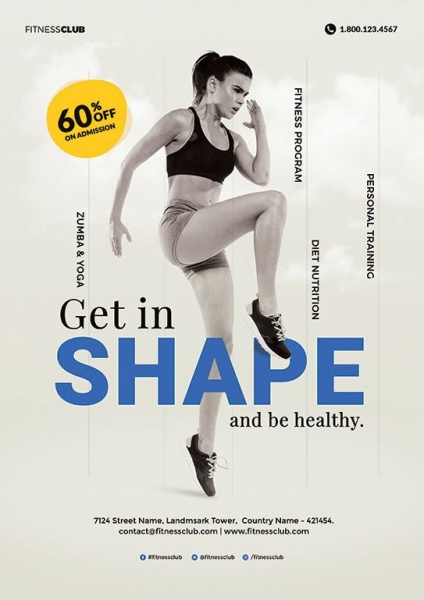
Flyer design by webduck –
Below are some business brochure examples that can help you choose the fold that best suits your needs.
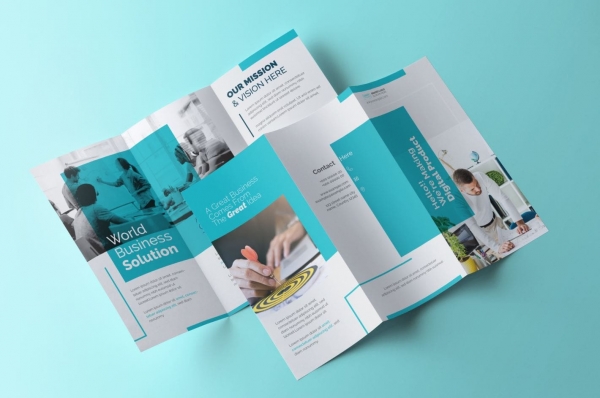
Tri-Fold brochure design by Mohammad Rasel
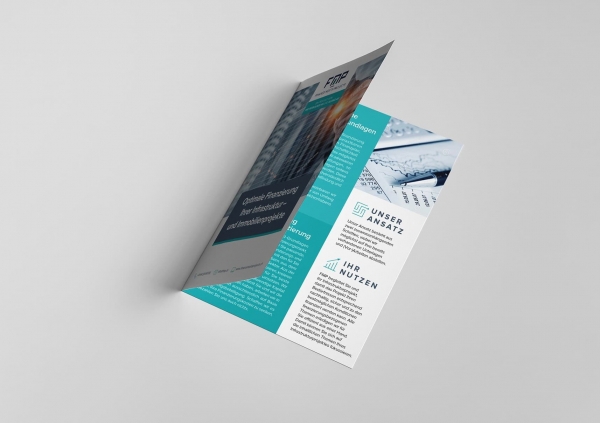
Half-Fold brochure design by Emanuel Dumitrescu
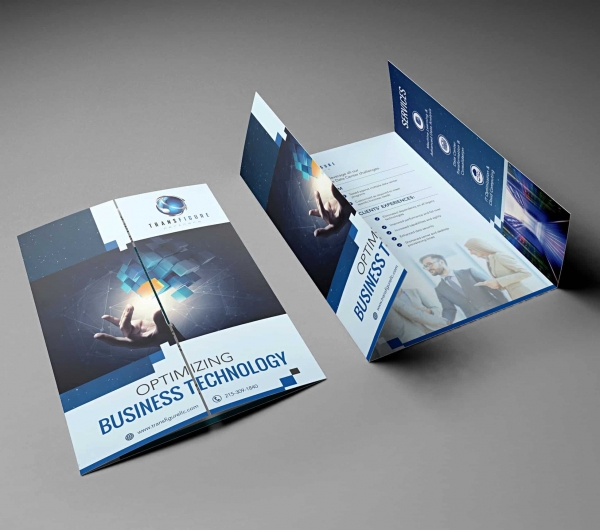
Gate-Fold brochure design by tumpa mistry
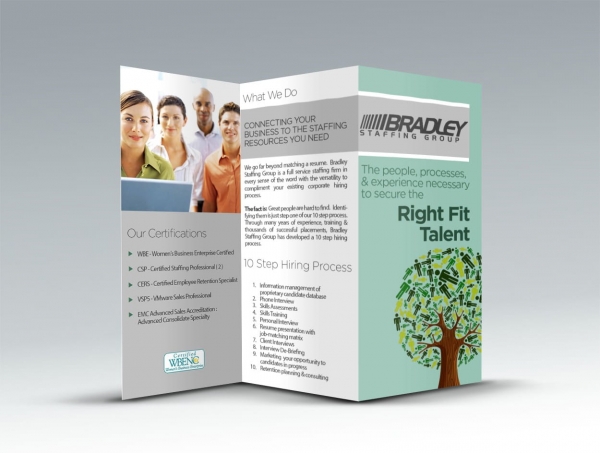
Z-Fold brochure design by Worker218
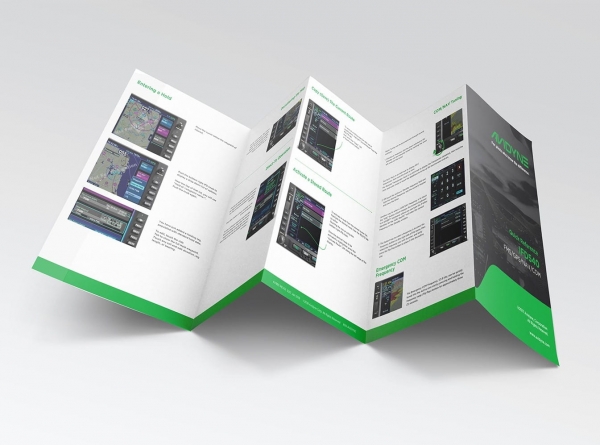
Accordion Fold brochure design by Terry Bogard
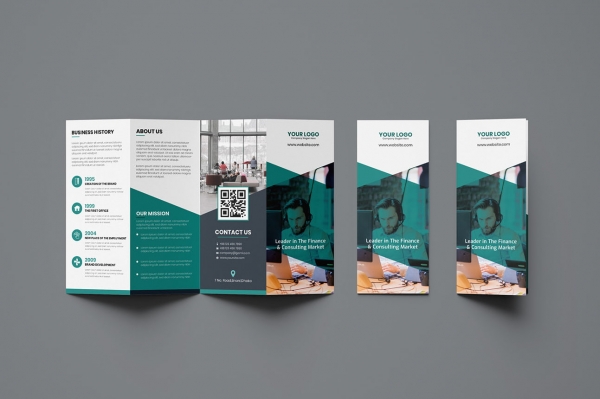
Parallel Fold brochure design by Sohag Hasan
Whatever type of brochure you end up choosing, take advantage of how you position the copy, images, and other design elements.
For example, if you decide to go with the Gate Fold, you could start with a question on the cover and reveal the answer on the inside panel.
C. Writing the Copy
Ideally, you should have the copy for your brochure ready before you start thinking about fonts, colors, and other visual elements. This will give you a better picture of how much space you need, how to structure your information, and what images and graphics to include to support your text.
Here are a few tips to make writing the content of your company brochure easier:
1. Craft a powerful headline
The headline is often the first thing someone notices about your brochure. This is your chance to grab their attention and leave them wanting to know more.
To make it memorable, your headline needs to be one-of-a-kind. Avoid clichés and formulas that the reader has seen time and time again. Study what the others are doing and come up with something that’s uniquely yours.
2. Format for skimming
Nothing can be more off-putting in a brochure than a wall of text. To avoid overwhelming the reader, make sure your brochure is easy to skim.
For this, use subheadings to mark different sections, divide your text into paragraphs, and use numbered lists or bullet points for enumerations.
Besides, if something can be explained easier by using a graph or an image, do that instead of adding more text to your brochure.
In the example below, the company explains its process and lists its services using puzzle pieces.
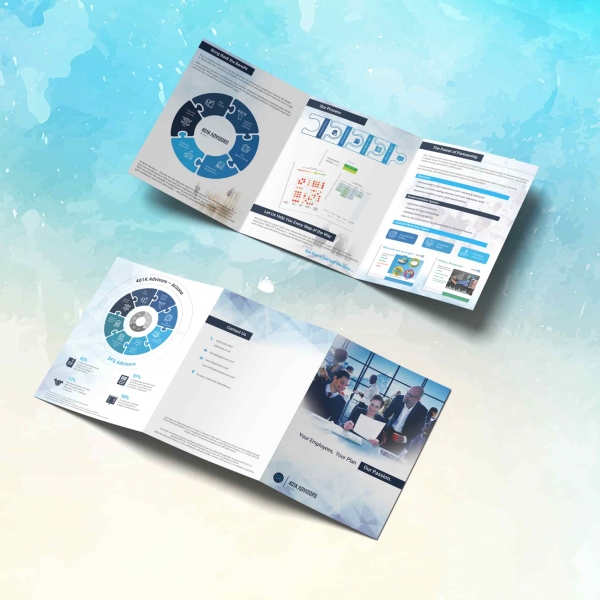
Brochure design by Sali Designs
3. Write simple, short sentences
Along the same lines, long phrases demand more attention and can sometimes confuse the reader. To improve the readability of your brochure, keep your sentences short and simple.
4. Adapt your language to the target audience
As mentioned before, adapting your writing style to your target audience is an essential part of winning them over. This aspect can make or break your image and credibility in a particular field.
For example, if you’re working on a children’s event company brochure, you can go with a friendly, playful style. However, this will work against you if you’re creating a brochure for an accounting or law firm.
5. Focus on the benefits
Listing your product’s benefits in your business brochure lets the reader know what you can do for them and why they should care about your company.
Depending on how technical your product is and who it’s targeted towards, the reader might not always be interested in knowing everything about its features. However, they might be interested in your product’s benefits, as benefits are easier to grasp.
Moreover, purchases are often not based on logic alone. Invite the reader to imagine how they would feel while using your products or working with your company by listing a few emotional benefits in your company product brochure.
In this brochure, the company lists some of the benefits already from the cover.
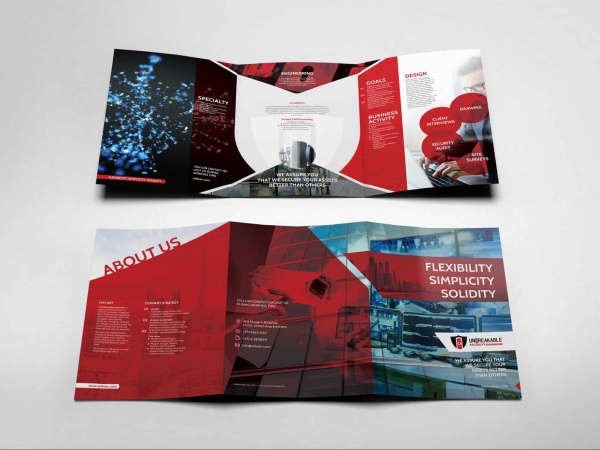
Brochure design by YaseenArt
6. Be willing to compromise
While you design your brochure, you might realize that some of the copy isn’t needed or just doesn’t fit well in the overall design, and that’s okay. It’s always easier to cut down than to build up the text.
Just remember to be flexible in terms of what will appear in the final version of the brochure. Don’t try to cram everything in.
7. Proofread it one more time
Mistakes in print can put a dent in your image and are costly to fix. Remember to proofread the final version of the brochure copy before it heads to print.
And, just to be 100% sure, ask a friend or a colleague to read it as well. After you’ve worked on it for a while, you might miss something that fresh eyes will spot in an instant.
D. Designing Your Brochure
Once you’ve written the copy for your brochure, chosen the images and the fold, it’s time to start on the design.
1. Choose the size of your brochure
According to 99designs, the most common paper sizes for brochures—before folding—are:
- Letter size: 8.5” x 11” (or 21.59 x 27.94 cm)
- DIN A4: 8.3” x 11.7” (or 21.0 x 29.7 cm)
- Legal size: 8.5” x 14”
- Memo size: 5.5” x 8.5”
- Tabloid size: 11” x 17”
- 9” x 12”
- 11” x 25.5”
But that doesn’t mean that your brochure has to be standard-sized. If your needs call for a uniquely-shaped brochure, go with that instead. It will surely help you stand out from your competitors.
2. Take advantage of unique print options
Although they might cost you more, special print elements are usually worth the investment, especially if your brochure is designed for a special event and has a longer shelf life.
For example, a die-cut that allows the reader to see a part of the panel behind the cover can make for a memorable, clever design.
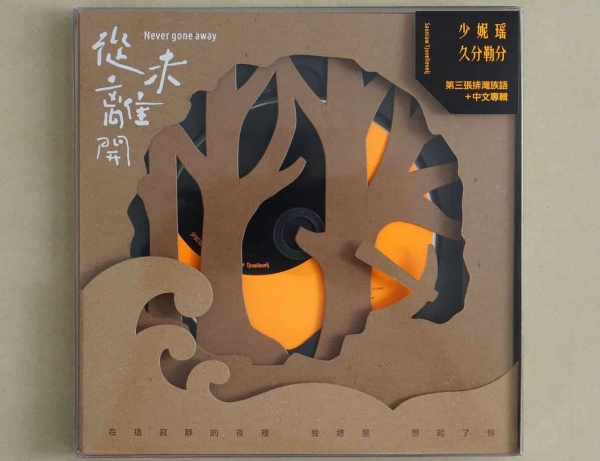
Die-cut brochure design by Neel Designs
You should consider these elements already from the design stage, but it’s good to check with your printer to see what they can do.
3. Make sure your design reflects your message and brand personality
Your brand identity and the message you’re trying to send should not become lost in your brochure design. Instead, they should be reinforced by the images, fonts, and other elements you use.
Below are three company brochure examples that illustrate this point.
For this construction company brochure, the designer matched the colors and the style of the icons to what can be found on the company’s website.
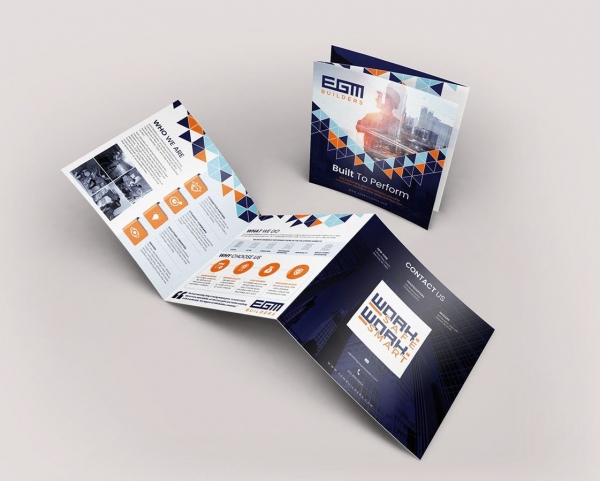
Brochure design by Elinora Designs
In this luxury real estate company brochure, the special cursive-like font and the choice of imagery emphasize the message the company is trying to send: “We sell luxury homes.”
The rich, warm tones of the design invite the readers to imagine themselves in a cozy, welcoming home, appealing to their emotional side.
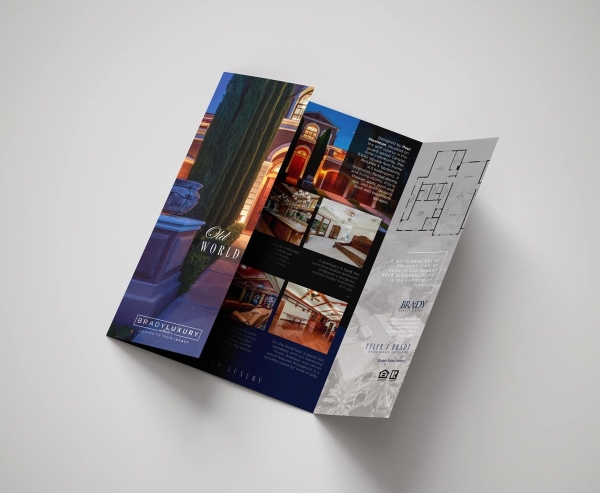
Brochure design by YaseenArt
In the IT company brochure below, the magenta used as the primary color is the company’s brand color, which can be found in its logo and throughout its website.
The server room image on the cover lets the reader know what the company does from the start and brings in the color blue, popular with IT and software company brochures.
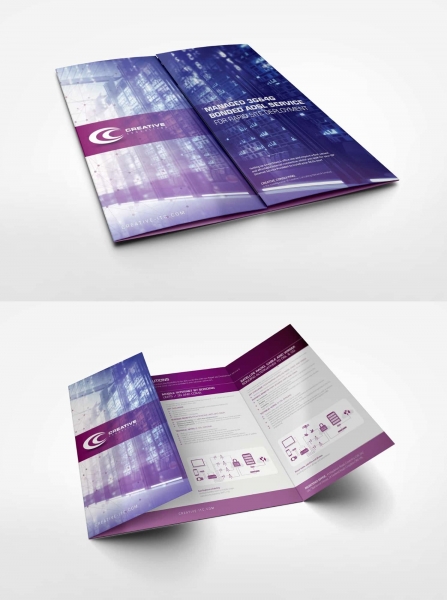
Brochure design by YaseenArt
4. Keep it clean
Using too many elements in your brochure too close to each other will overwhelm the reader. Don’t forget to use some whitespace to give your brochure a more airy feeling and make it easier to go through.
Some of the best company brochures have neat, uncluttered designs. Keep it simple.
5. Pick a font (or two)
Using lots of different fonts in your business brochure design can make it look messy and unprofessional. Try to stick with just one or two fonts instead.
Sans-serif fonts are known to improve readability, but you should go with a font that is consistent with the style of the rest of your design elements.
If you’re not sure what font to choose, you can find some inspiration in our blog articles.
6. Highlight the call to action
As mentioned before, a strong CTA is paramount in getting the reader to take action and getting you closer to accomplishing your goal.
Here are some CTA’s you can use:
- Register here
- Apply here
- Call now
- Learn more
- Claim yours
- Visit us today
Make sure not to bury the CTA in a mountain of text. Place it separately and use a different font, size, or color to make it pop and grab the reader’s attention.
Also, for the best results, don’t hide your CTA on the back of your brochure. Instead, repeat it—with variations—on different pages.
Here is an example of a great CTA, visible on both the front and back of the brochure.
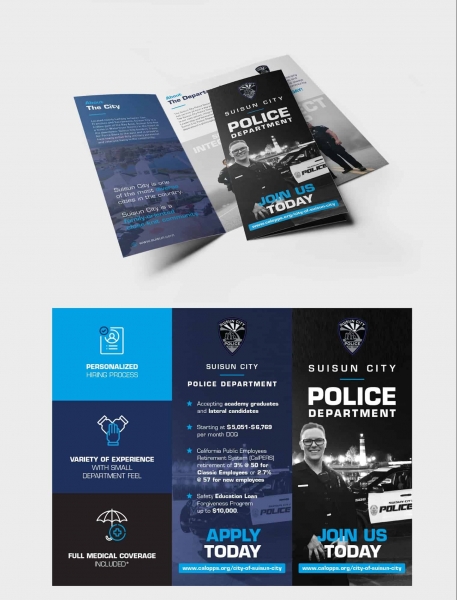
Brochure design by Emanuel Dumitrescu
E. How to Use Creatopy to Design Your Business Brochure
Once you know how you want your design to look, it’s time to put it into practice. Most of the time, it’s best to leave designing a brochure for business to a professional designer.
However, if you’re passionate about design and feel like you can step up to the task, try doing it yourself.
Follow these steps to get started:
1. Choose the brochure size
After you log into your Creatopy account, go to Start creating, type in “brochure” and click on this size.
2. Select a template or start from blank
You can create your design from scratch or use one of the many brochure templates available on Creatopy. In this step, you can click on any template to start editing it or click on Blank design to start fresh.
3. Personalize the brochure design
To customize the brochure, simply select the element that you want to change, and a menu for that element will pop up next to it, on the left side.
In just a few clicks, you can:
- Change colors
- Change fonts
- Change images
You can pick from over two million eye-catching stock photos or upload your own.
Also, from the Elements tab, you can add different shapes or masks to your brochure design.
These include social media icons for your brochure’s “Contact Us” section.
4. Download
Once you’re happy with how the company brochure design turned out, it’s time to download it.
You have two options here. If you’re going to use the brochure online, then you can download it in PDF standard format.
However, if you’re going to print the brochure, then you need to download it in PDF print, which is going to be high-quality, perfect for print.
F. Printing Your Brochure
Before heading to print, check your brochure one more time to see if it corresponds with your needs. This is your last chance to make changes to your design.
Once you’re ready, choose your printer carefully. It can make all the difference in how your colors, images, and other visual elements turn out.
Visit various print shops and ask for a company brochure sample from each. Also, check what special elements they offer, such as die-cutting or embossing, and find out how much these cost.
Then, choose the right paper for your brochure. The two aspects you should consider are:
- Paper density: 170-300 GSM is the recommended weight for company brochure designs.
- Paper finish: for business brochure printing, you should consider a coated paper with a glossy or matte finish.
Finally, test print your brochure to make sure you are satisfied with it before spending money on more copies.
Final Thoughts
How you design and write your company brochure can make the difference between getting your target audience to read it and ending up in the trash or a pile of forgotten brochures.
The tips presented in this article show you how to craft a powerful brochure that will bring you closer to your goals.
